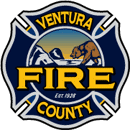Emergency Response
Responding to Emergencies: How it Works
The Ventura County Fire Protection District responds to a wide range of emergencies and requests for help. Our initial response aims to mitigate or eliminate all the known hazards at the time of dispatch.
The appropriate type and number of units are dispatched by FCC (Fire Communication Center) from the various types of available VCFD resources. Response levels are based on type of incident, location, weather conditions, existing or potential emergencies, available resources, and the information we’re provided with. Staffing levels and specialized resources are adjusted according to existing or potential conditions.
Allocation of Available Resources
The closest available resource, plus the closest available resources of the type needed, respond to incidents. GPS (global positioning satellite) systems on our vehicles and CAD (computer-aided dispatch) allow us to identify and dispatch the nearest available fire engine. One of the priorities of the first-arriving personnel is to determine the incident’s needs—and adjust the response accordingly. In some instances, the closest available resource may come from another fire department. Mutual aid, automatic aid, and other agreements with surrounding fire departments enable us to provide the fastest and highest level of service. In some instances, the closest available resource may come from another fire department. Mutual aid, automatic aid and other agreements with surrounding fire departments enable us to provide the fastest and highest level of service.
Fire Engine Deployment
All VCFD fire stations have a staffed fire engine in service. Attacking the fire is the primary purpose of a fire engine—and all of the equipment carried on the vehicle is designed to attack and extinguish a fire. The engine crew will attack the fire by establishing a water supply (usually a fire hydrant), pulling hose lines off the engine, and then using them to extinguish the fire.
At strategic fire stations throughout the county, VCFD staffs a fire truck along with an engine. Supporting the fire attack effort, as they work to extinguish the fire, is the primary purpose of a fire truck. The responsibilities of a truck crew can include forcible entry (so firefighters can gain access to the fire), turning off utility services (such as gas or electricity that could pose additional danger), clearing smoke and gasses from the building (ventilation), search and rescue, placing ladders for access to the building, and many other tasks. Fire trucks also carry specialized tools to extricate patients trapped in vehicles at traffic collisions. Some VCFD fire stations also staff paramedic squads and/or rescue engines.
Specialized Units
Specialized units with unique capabilities for incidents involving special hazards or needs are also available for response. These units are not normally staffed. Personnel with specialized training and qualifications will move from their regularly assigned units at the fire station and respond with these specialized units as needed. These specialized units will often respond and operate with in concert with specialized units from other fire departments to form a regional response to incidents that present unique challenges.
Crash/Rescue
Crash 50 responds to incidents involving flammable liquids, primarily aircraft crashes, oil field facility fires, flammable liquid storage, and transportation emergencies. Crash 50 has the capability to extinguish flammable liquid fires and secure spills.
Hazardous Materials (Haz Mat)
The Hazardous Materials (aka Haz Mat) unit responds to incidents involving chemical, biological, radiological, and etiological hazards—or any other unknown substances. The Haz Mat team will isolate, make entry into a hazardous area, identify, and mitigate the hazard. They also perform decontamination of victims and emergency personnel.
Urban Search & Rescue (USAR)
The Urban Search and Rescue (aka USAR) unit responds to technical rescue incidents. These incidents involve victims who are trapped due to earthquakes, building collapse, cave-in, trench collapse, major transportation crash, or other incidents where the entrapment exceeds the capabilities of the regular crews. The USAR team will stabilize the scene, make access to, and extricate the victim.
Water Rescue
The water rescue unit responds to water rescue incidents that exceed the capabilities of land-based units. The team is capable of in-water rescue and/or watercraft rescue and is intensively trained in swiftwater, ocean, and lake rescues.
Wildland/Aviation
The wildland unit operates the handcrew and bulldozer resources on wildland fires in the construction of fire control lines. The unit also operates with the Ventura County Sheriff’s aviation unit on the helicopter’s response to fire and rescue incidents. Staffing levels within the unit vary according to season and wildfire threat.


